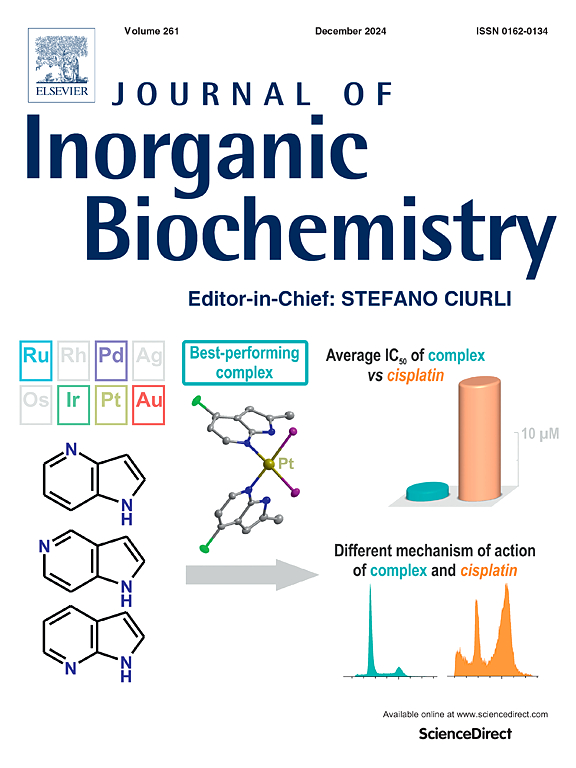Two multifunctional zero-dimensional Gd(III) complexes: magnetocaloric effect and anticancer mechanisms for lung cancer
IF 3.8
2区 化学
Q2 BIOCHEMISTRY & MOLECULAR BIOLOGY
引用次数: 0
Abstract
Two Gd(III) complexes [GdL(H2O)(NO3)2(CH3OH)0.75(CH3CH2OH)0.25] (Gd1) and [Gd2(OOCCH3)2L2(H2O)6]•2(H2O) (Gd2) (HL = 2-pyridylcarboxaldehyde isonicotinoylhydrazone) were synthesized with a Schiff base ligand. Crystallographic study reveals both Gd1 and Gd2 have a zero-dimensional mononuclear or binuclear structure. Magnetic investigations demonstrate that Gd1 and Gd2 exhibit potential magnetocaloric effects due to Gd(III) ions, which provide negligible magnetic anisotropy, and possess low-lying excited spin states. The antiproliferative activity of Gd1 and Gd2 to three tumor cell lines was conducted and the results showed Gd1 and Gd2 showed more pronounced antiproliferative activity to A549 cells better than cisplatin. The administration of Gd1 and Gd2 led to an increase in apoptosis among A549 cells in a concentration-dependent manner, along with a corresponding rise in the levels of reactive oxygen species (ROS) within the cells. Besides, Gd1 and Gd2 were able to significantly inhibit tumor cell migration. Cell cycle assay in A549 cells revealed that cell cycle was arrested of G0/G1 phase. Western blotting analysis showed that Gd1 and Gd2 complexes could promote apoptosis in A549 cells by modulating the expression of Bcl-2 and Bax proteins.

求助全文
约1分钟内获得全文
求助全文
来源期刊

Journal of Inorganic Biochemistry
生物-生化与分子生物学
CiteScore
7.00
自引率
10.30%
发文量
336
审稿时长
41 days
期刊介绍:
The Journal of Inorganic Biochemistry is an established international forum for research in all aspects of Biological Inorganic Chemistry. Original papers of a high scientific level are published in the form of Articles (full length papers), Short Communications, Focused Reviews and Bioinorganic Methods. Topics include: the chemistry, structure and function of metalloenzymes; the interaction of inorganic ions and molecules with proteins and nucleic acids; the synthesis and properties of coordination complexes of biological interest including both structural and functional model systems; the function of metal- containing systems in the regulation of gene expression; the role of metals in medicine; the application of spectroscopic methods to determine the structure of metallobiomolecules; the preparation and characterization of metal-based biomaterials; and related systems. The emphasis of the Journal is on the structure and mechanism of action of metallobiomolecules.
 求助内容:
求助内容: 应助结果提醒方式:
应助结果提醒方式:


